Collection
See also:
The dollar ($) has been used in these examples, but any other currency (€, £, F, ¥, R, DA, Rs… etc.) may be used.
Most of the calculations below may use Fixed (unique interest rates) or Variable rates.
Real-life examples:
Late / unpaid accounts receivable (interest between 2 dates)
Late / unpaid accounts receivable with regular or irregular payments made by the debtor
Late / unpaid accounts receivable (interest between 2 dates)
Unpaid account due on May 5, 2003 and still unpaid on October 10, 2004. How much interest is due on this account?
Monthly rate of 2% (24% annually) and compounded monthly according to the terms of the sale.
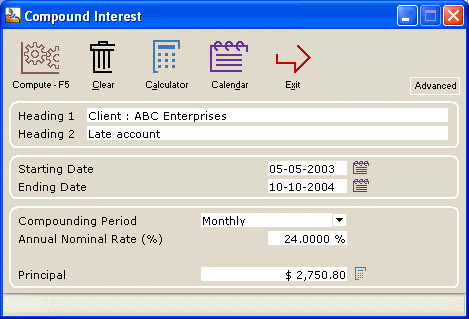
Results screen
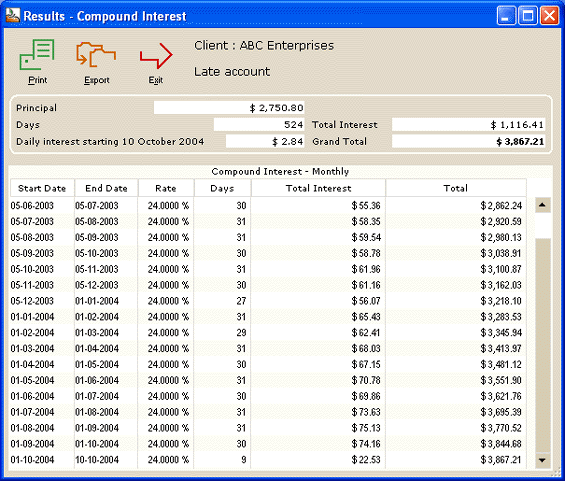
Late / unpaid accounts receivable with regular or irregular payments made by the debtor
Example 1:
Debtor owes a significant amount that cannot be paid in one unique payment. There is an agreement between the collection agency to repay in equal payments BUT the debtor does not respect the payment schedule.
- $50,000 owed
- Debtor will pay $2500 every 2 weeks
- Interest rate of 24% annually compounded monthly
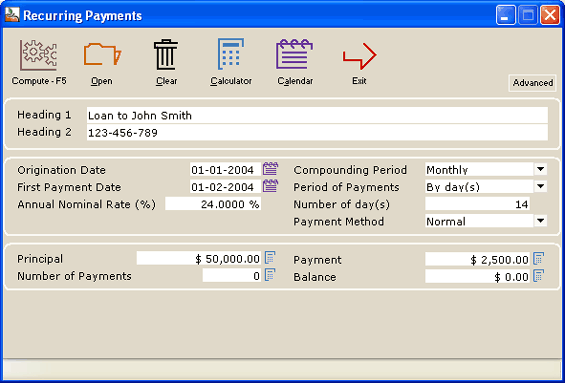
Irregular events:
- Missed payments on February 29, 2004
- NSF check on April 25, 2004 which imply the payment of a $25 fee
- July 4, 2004 payment of only $1000
- Extra $5000 payment on September 12, 2004
Margill is very powerful to calculate all sorts of irregular payment schedules.
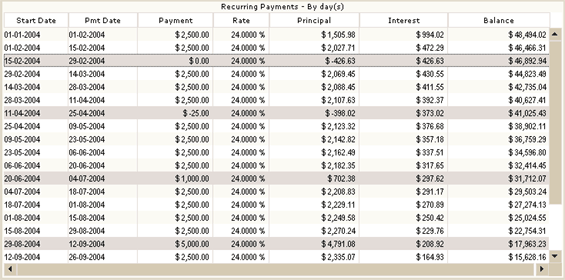
Example 2 :
Irregular invoices and irregular payments by debtor
5 bills sent to client at various dates – interest always starts 30 days later
- $ 4500 – May 10, 2002 (interest starts June 9, 2002)
- $ 3450 – June 2, 2002 (July 2)
- $ 5500 – June 2, 2002 (2 bills on same date) (July 2)
- $ 12,000 – October 1, 2002 (October 31)
- $ 7500 – January 15, 2003 (February 14)
Client pays irregularly :
- $ 2000 – August 1, 2002
- $ 2500 – September 15, 2002
- $ 5000 – October 20, 2002 – turns out to be NSF with $25 fee
- $ 7500 – January 10, 2003
- $ 10,000 – June 5, 2003
How much is stilled owed on November 12, 2004? Monthly interest of 2% compounded monthly (could also be simple interest).
Using Recurring payments (Amortization), enter basic information in the data entry screen.
$4500 is the starting principal (first amount due). Although the invoices are irregular, we can create an approximate table which will be edited afterwards. That is why a payment of 1$ is included (we could have used “Irregular” payments).
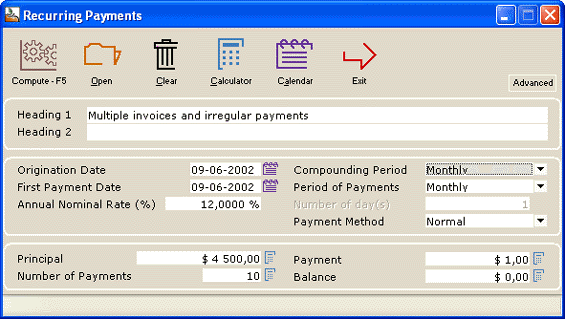
The table is then edited to reflect all the events.
The $5000 NSF includes the payment by the debtor (+5000) and on the same day (-5000) (total 0) and $25 in fees charged.
The balance due over a year later is $7301.12.
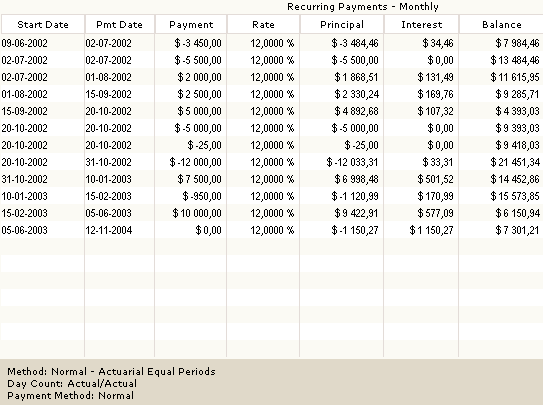
Judgment collection
See Collection of judgment awards by recurring payments
Late tax payments
Margill includes tax tables for the US, Canada and Australia. Many legal interest rate tables are also included for Europe. You can easily create your country’s tax tables or we can create them for you.
The following example uses the IRS Underpayments (USA) table:
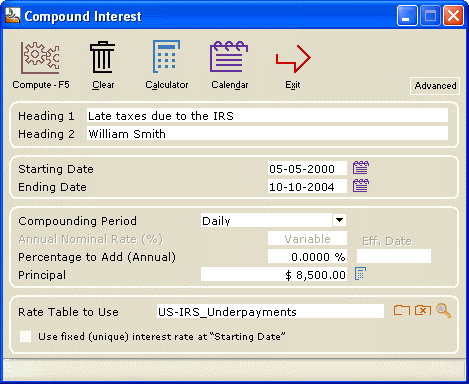
Results screen:
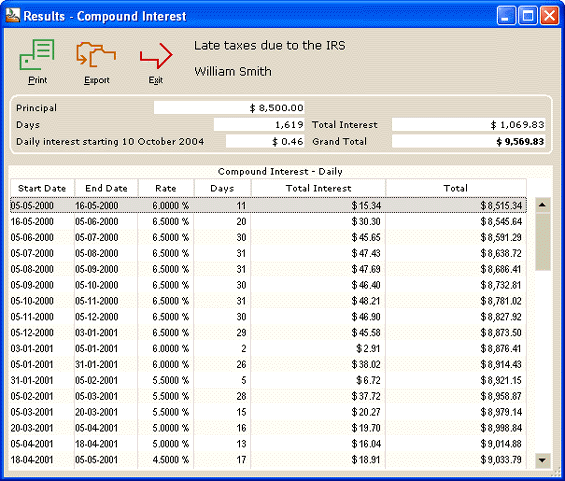
In cases where the debtor can only refund the back taxes through regular (or irregular) payments, Margill can easily create a schedule at fixed or variable interest rates. As time goes on, the schedule can be updated to reflect interest rate changes, missed payments, and all other types of payment events. See Late / unpaid accounts receivable with regular or irregular payments made by the debtor above.
